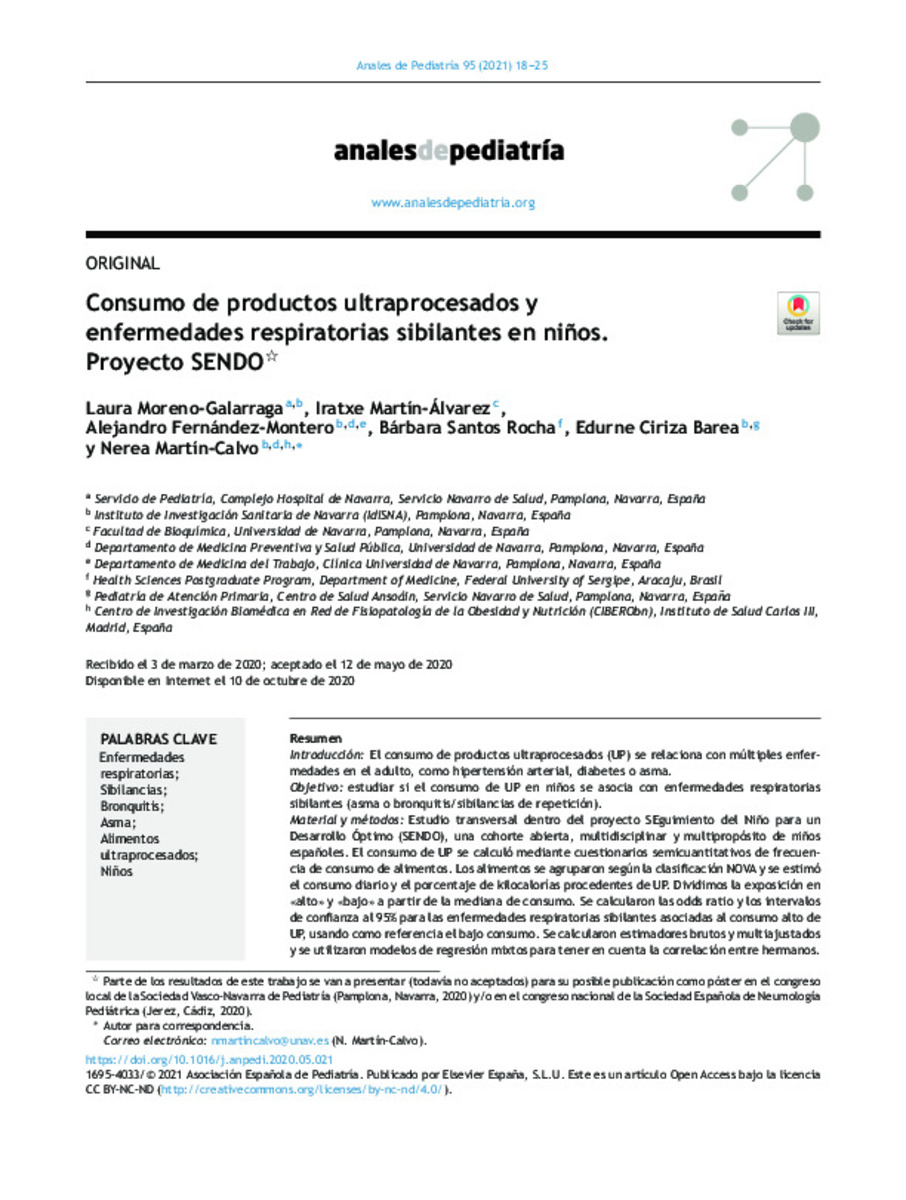Consumo de productos ultraprocesados y enfermedades respiratorias sibilantes en niños. Proyecto SENDO
Other Titles:
Consumption of ultra-processed products and wheezing respiratory diseases in children: The SENDO project
Keywords:
Enfermedades respiratorias
Sibilancias
Bronquitis
Asma
Alimentos ultraprocesados
Niños
Respiratory diseases
Wheezing
Bonchitis
Asthma
Ultra-processed foods
Children
Note:
Este es un artículo Open Access bajo la licencia
CC BY-NC-ND
Citation:
Moreno-Galarraga, L. (Laura); Martín-Álvarez, I. (Iratxe); Fernandez-Montero, A. (Alejandro); et al. "Consumo de productos ultraprocesados y enfermedades respiratorias sibilantes en niños. Proyecto SENDO". Anales de Pediatría. 95 (1), 2021, 18 - 25
Statistics and impact
0 citas en

0 citas en

Items in Dadun are protected by copyright, with all rights reserved, unless otherwise indicated.







